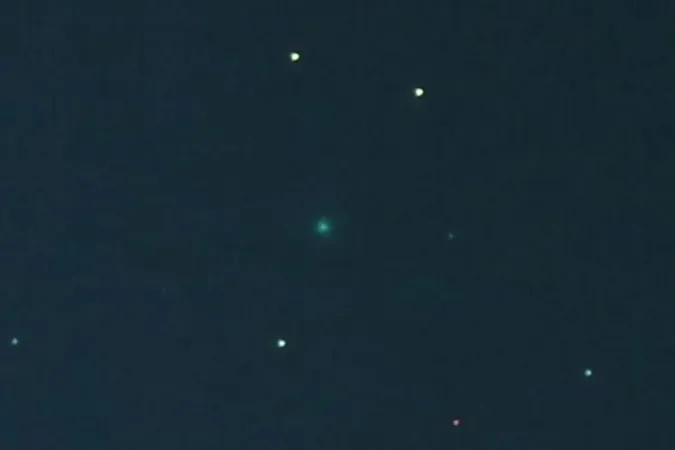
A New Celestial Sensation! How to Spot the Latest Comet C/2025 F2 (SWAN)
2025-04-10
Author: Benjamin
Discover the Morning Marvel!
Get ready, skywatchers! A newly-discovered comet, named C/2025 F2 (SWAN), is currently gracing the morning sky. This celestial wonder is located low in the east, making its presence known just before dawn twilight.
Where to Find It?
C/2025 F2 (SWAN) is nestled within the famed Great Square of Pegasus, but don’t be fooled—this comet is faint, shining at a magnitude of +8, which means it’s not visible to the naked eye. Optics enthusiasts, however, are gearing up to catch a glimpse of it through telescopes before the daylight washes it away.
The Story Behind the Discovery
The tale of Comet C/2025 F2 (SWAN) is as intriguing as the comet itself. Unlike the days when amateur astronomers were the primary comet seekers, today’s robotic survey telescopes like PANSTARRS and ATLAS are the main players in cosmic discoveries. This comet was spotted through a blend of human expertise and robotic technology, with initial sightings coming from images taken by NASA’s SOHO solar observatory.
What Does It Look Like?
As for its appearance, Comet C/2025 F2 (SWAN) is currently small and may look like a blurry star through telescopes. However, photographers are capturing stunning long-exposure images revealing its slender tail and vibrant green hue. As the comet continues its journey, it will soon transition out of Pegasus and head towards the Andromeda constellation. Get ready for some challenges, though, as brightening skies could make spotting it tricky even with binoculars!
A Bright Future Ahead?
Mark your calendars! The comet is set to reach its closest point to the Sun—perihelion—on May 1, 2025. By then, it’s anticipated to shine at a magnitude of around +4, potentially visible to the naked eye if conditions are just right. However, keep in mind that from certain latitudes, it may not be high enough in a dark sky for easy viewing.
Safety First: Viewing Tips!
If you're eager to catch a glimpse through binoculars or a telescope, remember to be cautious of the rising Sun. Observing near sunrise can be dangerous for your eyesight, so ensure the Sun is well below the horizon before taking a peek!
Expect the Unexpected!
While Comet C/2025 F2 (SWAN) may not have the spectacular presence of past comets like Hale-Bopp, it still promises to be a fascinating celestial sight. Observers in the Southern Hemisphere will have a better vantage point, but with a little luck, skywatchers from all over will still have a chance to relish this icy visitor.
Stay Updated!
We’ll keep you posted with the latest updates on this comet's journey. In the meantime, if you want to locate it, check out popular stargazing and planetarium apps for guidance. Happy stargazing!









 Brasil (PT)
Brasil (PT)
 Canada (EN)
Canada (EN)
 Chile (ES)
Chile (ES)
 Česko (CS)
Česko (CS)
 대한민국 (KO)
대한민국 (KO)
 España (ES)
España (ES)
 France (FR)
France (FR)
 Hong Kong (EN)
Hong Kong (EN)
 Italia (IT)
Italia (IT)
 日本 (JA)
日本 (JA)
 Magyarország (HU)
Magyarország (HU)
 Norge (NO)
Norge (NO)
 Polska (PL)
Polska (PL)
 Schweiz (DE)
Schweiz (DE)
 Singapore (EN)
Singapore (EN)
 Sverige (SV)
Sverige (SV)
 Suomi (FI)
Suomi (FI)
 Türkiye (TR)
Türkiye (TR)
 الإمارات العربية المتحدة (AR)
الإمارات العربية المتحدة (AR)